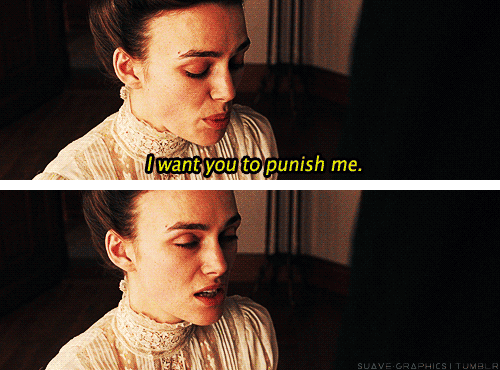Not all doms serve the same purpose.
Ever since the art of BDSM started growing, so too did the roles within its community. Partaking in the lifestyle means having the patience to educate yourself on the existing dom/sub relationships out there.
Now, knowing about dominants as the stoic and harsh kind is no longer enough. You’ll need to keep up with the emerging new roles to figure out which you associate yourself with or what you are looking for in a dom.
In this article, we’ve taken the liberty to divide the dominant types into selected categories:
- the best ones to have for a committed relationship
- the best ones for engagement in the lifestyle
- the best ones for exposure to the community
This isn’t to say that these doms can’t overlap or serve each other’s function. But for the sake of clarity, categorizing them helps beginners understand where the shoe fits most of the time.
What’s the point of naming the different types of doms if there are hundreds of variations out there? For one, labels are useful as a starting point for a conversation, especially when you’re actively looking for new BDSM partners to play with. Without labels, it can be time-consuming to sift through and have one-on-one conversations with hundreds of people in the BDSM community about how they like to be treated in bed.
That said, it’s most convenient to find a label that you feel most comfortable with and expand on that label when the situation arises. That way, you increase your chances of finding the perfect partner with whom you can roleplay your wildest fantasies. The distinction is subtle, but it is there. And it is life-changing.
The Best Dominants For A BDSM Lifestyle
1. Hard Dom/me
Let’s start off easy. When people think of doms, we can almost guarantee they’re most likely thinking of hard doms.
Hard doms set a precedent on what doms should be like, at least in popular culture. Think of a sadist like Christian Grey with his collection of cuffs, whips, ropes, and paddles in the infamous Red Room.

Hard doms get pleasure out of being rough and forceful. They push you out of your limits to really feel a strong sense of power-play happening between you two. They like to set firm rules in place, If you break them, they will not hesitate to act on your punishment.
But that isn’t to say that hard doms don’t respect boundaries—not at all. Consent is key in BDSM, something that even the hardest of hard doms adhere to. Intense play is more often found here than anywhere else. It includes but isn’t limited to choking, anal sex, fisting, suspension bondage, and whipping.
Hard doms like to be cold, exert force, and demand compliance during sessions. But you might be surprised to find out that it’s not necessarily the same case outside the bedroom.
2. Master/Mistress
The terms master and mistress are often reserved as honorifics for people of a high social class. They connote a particular level of authority within the strata of a given society, which naturally commands a more formal reception.
Being involved with a master is more than a simple bedroom engagement—it’s a lifestyle that will seep into every aspect of your life. Physical, emotional, mental, financial, psychological, whatever you’re thinking of, the master is in control now. Even the submissive has a special name under this variation as to fully embody the role for themselves: slave.

Masters are focused on training slaves to serve them in the way they enjoy, which can range from household chores to kinky services. It’s very common for masters to control their slaves’ bank accounts and choices of clothing. Inherent in this dominant is the concept of ownership.
For masters, the slaves under them are “property” over which they have absolute control. They might even ask you to ask permission before you can eat, use the bathroom, or take a nap. In some cases, this kind of dom/sub relationship is also recognized as total power exchange (TPE), a 24⁄7 arrangement that you consented to take over your life.
3. Owners
Owners are similar to masters and mistresses in many ways: they like to govern your entire life as much as possible. The difference lies in the role dominants choose: instead of owning slaves, they own pets.
Another detail that might separate an owner/pet relationship from that of a master/slave: whereas a slave could loathe his master, a pet displays unconditional love to the owner. In the BDSM community, this is referred to as pet play, where dehumanizing you is part of the fun.
Being an owner is usually a new ground for dominants, even for the most experienced ones. This is because it will require you and your pet to delve deep into unfamiliar parts of your psyche that have never been explored before.
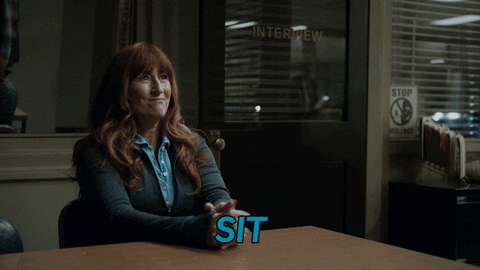
Some owners are keen on owning specific pets, ordering you to take on the hybrid roles of several pets at once. These scenarios entail that you adopt animal mannerisms and behaviors—eating from a bowl, crawling on all fours, and wearing a collar to mark possession.
Owners are expected to groom, feed, and when the situation calls for it, cage their beloved pets. It’s not uncommon for owners to demand that you wear a collar or take on a new name given to you to symbolize the new life you have under them.
Pets live to be obedient through training. As owners, these doms will facilitate a lot of training sessions, providing positive and negative reinforcements on a daily basis. Consistency is key to proper training, after all.
Since you’re not allowed to speak unless instructed to, you’d have to rely on non-verbal cues to get your point across. Because animals can’t actually own anything other than toys, your financial responsibilities are usually handed over to your owner.
4. Riggers
The BDSM community might not think of riggers as doms initially. But if you think about it, being at the receiving end of a rigger’s fantasy will result in near-complete immobility that leaves you without a choice but to submit to the rigger in charge.
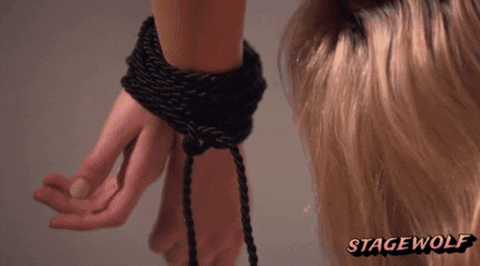
Rope is at the center of this dom’s personality in the bedroom, where control comes in the form of restraint. Most times the equipment is rope, but in some cases you’ll find straitjackets or stockings are creatively incorporated into the play to restrain movement.
It goes without saying that bondage is a complex practice that can take years to master, so it’s no laughing matter for them. Riggers are highly skilled at both the art of bondage and dominance, and combining the two is no easy task. In this scenario, the submissive is identified as a rope bunny.
One of the most arousing scenes a rigger can put you in is a spread-eagle position, which puts you in a vulnerable position to give in to whatever whim your dom lays at your feet. No other dom/sub relationship will require this much communication since lives can be at stake here, especially during suspension bondage.
The Best Dominants For A BDSM Relationship
1. Soft Dom/me
Soft doms are ultimately loving and gentle to you but, as Urban Dictionary would put it, “a powerful force to be reckoned with when they need to be.” Think of soft doms as the gentleman of the BDSM world.
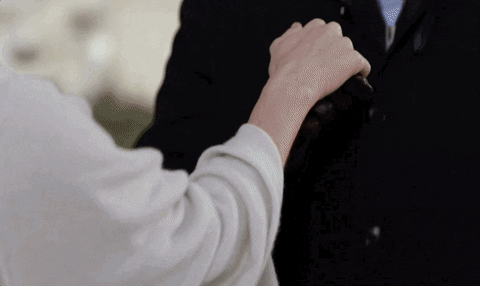
No contorted positions, hard slaps across the face, and other graphic renditions you might see in porn. But that also doesn’t mean they aren’t capable of rough play. In fact, never underestimate what a soft dom can do to you. Underneath that empathetic mask is a dom who knows what he wants and isn’t afraid to get it.
However, instead of using pain to get what they want, they’re more supportive and encouraging when it comes to ordering the completion of a task. Generally for them, the act of submission is prioritized over the infliction of pain. You can find soft doms taking control of the situation using a far more approachable personality compared to the rest of the personalities on this list.
The relationship is centered around intimacy rather than intensity. Some might even argue that there are a lot more rewards than punishments with soft doms.
We’re not usually ones to paint roles in black and white, but thinking about the opposite of a hard dom can be the simplest explanation to what a soft dom is and embodies.
2. Daddy/Mommy Dom/me
We always hear “daddy” used as a name for a significant other, a fuck buddy, or generally any hot guy in sight, but did you know it’s an actual term in the realm of BDSM?
Daddy dom is commonly used in the DDLG community, a dom/sub relationship where the dom plays as a parent while the submissive plays as a child—also known as a little. The setup is also commonly referred to as age play.
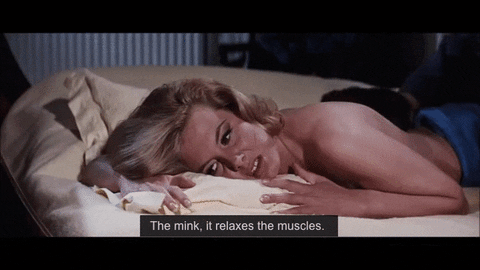
Few people in the world have more power than a parent has to her own child, which is why this dom/sub relationship satisfies a kind of control fetish you’d expect from a dom.
Here, these parental figures can go in two different ways, taking on the role of either a nurturing or strict caregiver. Either way, they embody what it means to look after a more naive submissive who will do whatever it takes to please a person of familial authority.
The very nature of men is to be attracted towards youth and innocence—and having a pretend child fixes that for them. However, this doesn’t mean there aren’t mommy dommes around. Regardless of gender, they will want to have someone so small and vulnerable to spoil and protect, something which only a true dom will be able to provide.
Like in owner/pet relationships, daddy and mommy dom/mes will require a lot of patience to discipline the child in care. Some common punishments order the child to limit sweets, write lines, and have an early bedtime. Kinkier ones include being spanked, edged, and forced to wear a chastity belt.
3. Pleasure Dom/me
Pleasure doms are, for the lack of a better word, pleasure-oriented—but it’s not so much to themselves than it is to you. They will do everything in their power to bring as much pleasure as they can to you in the form of multiple orgasms. In most cases, pleasure doms will give you even more than you can handle.

It can be perplexing to understand why pleasure doms are part of the list. It’s important to remember that domination isn’t always about gaining the most pleasure out of the situation, but getting what you want by taking charge of it.
The two are distinct: the person in charge can choose to be selfish or selfless—and a pleasure dom choosing the latter shouldn’t make them less of a dom. That said, they take charge in the way they want to: pleasure the sub in all the ways that they can.
Pleasure doms are the ultimate givers. You can even say their existence revolves entirely around it. There’s no need for the pleasure dom to experience any sensation in return as pleasuring others is enough to leave them satisfied.
This trait is often seen as a strength in a pool full of more selfish doms who are primarily—or perhaps mistakenly—after their own sexual gratification. If you aren’t enjoying yourself as a submissive, then you can bet the pleasure dom isn’t, either.
The Best Dominants For A BDSM Community
1. Trainer/Mentor
Penetrating (no pun intended) the BDSM community is not as easy as it sounds. It can be quite intimidating to join an established community where jargon and technique abound, which is why it can be a good idea to find a trainer or mentor to ease your journey into BDSM.
Training, at its most basic, is just teaching someone to do (or not do) what is asked or commanded of them. In the context of BDSM, it’s using a system of rewards and punishments to elicit a certain response or behavior.

Like soft doms, dom trainers put a prime on positive reinforcement. If you’re a newcomer looking to be mentored about BDSM, you wouldn’t want a harsh critic as a guide. You’d want someone you can rely on for guidance and patience. Being a trainer involves listening to a newcomer’s needs, wants, and apprehensions then guiding them accordingly. Pointing them in the right direction is also part of the process.
Among the major responsibilities of a trainer is to be consistent and transparent. There should already be a clearly established baseline for what is okay and what is not both in training and in the scene before anything can ensue.
No kind of training is standardized or universal, but there are certain skills required to be considered a good dom trainer. In fact, some trainers are so skilled at both practice and empathy that the mentoring set-up evolves into a genuine dom/sub relationship later on.
Find Your Dominant Partner Today
There you have it—the eight types of dominants you can find in the BDSM community. There truly is beauty in diversity. Before we end, here’s a quick word to our readers.
For doms:
Remember, the list is meant to expand your horizon, not limit! Just because you’re most closely aligned to a certain dominant type doesn’t mean you aren’t allowed to exhibit or explore roles, styles, and behaviors often associated with other labels. It’s perfectly normal to want to do so.
Keep in mind that regardless of the fantasies played out, you and your partner are equals at the end of the day. Trust and communication don’t just go a long way—it’s the only way! Let your desires and limits be known the same way you would ask a submissive for theirs.

For subs:
If you’re fortunate enough to already have a dom in your life, then make sure they won’t be going away anytime soon! God knows how hard it is to look for a new one that will actually respect boundaries.
That said, don’t be afraid to ask your dom to inhabit other forms of dominance if you find yourself wanting to try out other roleplays. After all, they’ve already got the foundation of what a dom is—the rest are toppings.
